Microorganism Classification: Taxonomy, Domains, and Characteristics
1/65
There's no tags or description
Looks like no tags are added yet.
Name | Mastery | Learn | Test | Matching | Spaced |
|---|
No study sessions yet.
66 Terms
Taxonomy
the science of biological classification
Classification
grouping organisms into taxa based on mutual similarity or evolutionary relatedness
Identification
characterization of an isolate to determine what species it is
Nomenclature
assignment of names to taxonomic groups in agreement with published rules
Anaerobic Jar and Chamber
used to hold petri plates supporting cultures
Carolus Linnaeus
developed a new way to categorize plants and animals
Ernst Haeckel
wrote General Morphology of Organisms, proposing four kingdoms
Robert Whittaker
proposed adding a fifth kingdom (fungi) to the tree of life
Systematics
study of the diversity of life (both past and present) and the relationships among living things through time
Species (in prokaryotes)
collection of strains that share stable properties in common and differ significantly from other group of strains
Species (in eukaryotes)
a group of closely related organisms that breed among themselves
Strain
population of organisms that descends from a pure culture isolate or from a species
Carolus Linnaeus
The most famous early taxonomist was a Swedish botanist, zoologist, and physician named ________ (1701-1778)
Systema Naturae
Published by Carolus Linnaeus, it proposed the Linnaean taxonomy

Haeckel Tree
1st attempt to depict the common evolutionary history of all living cells (by Ernst in 1866)
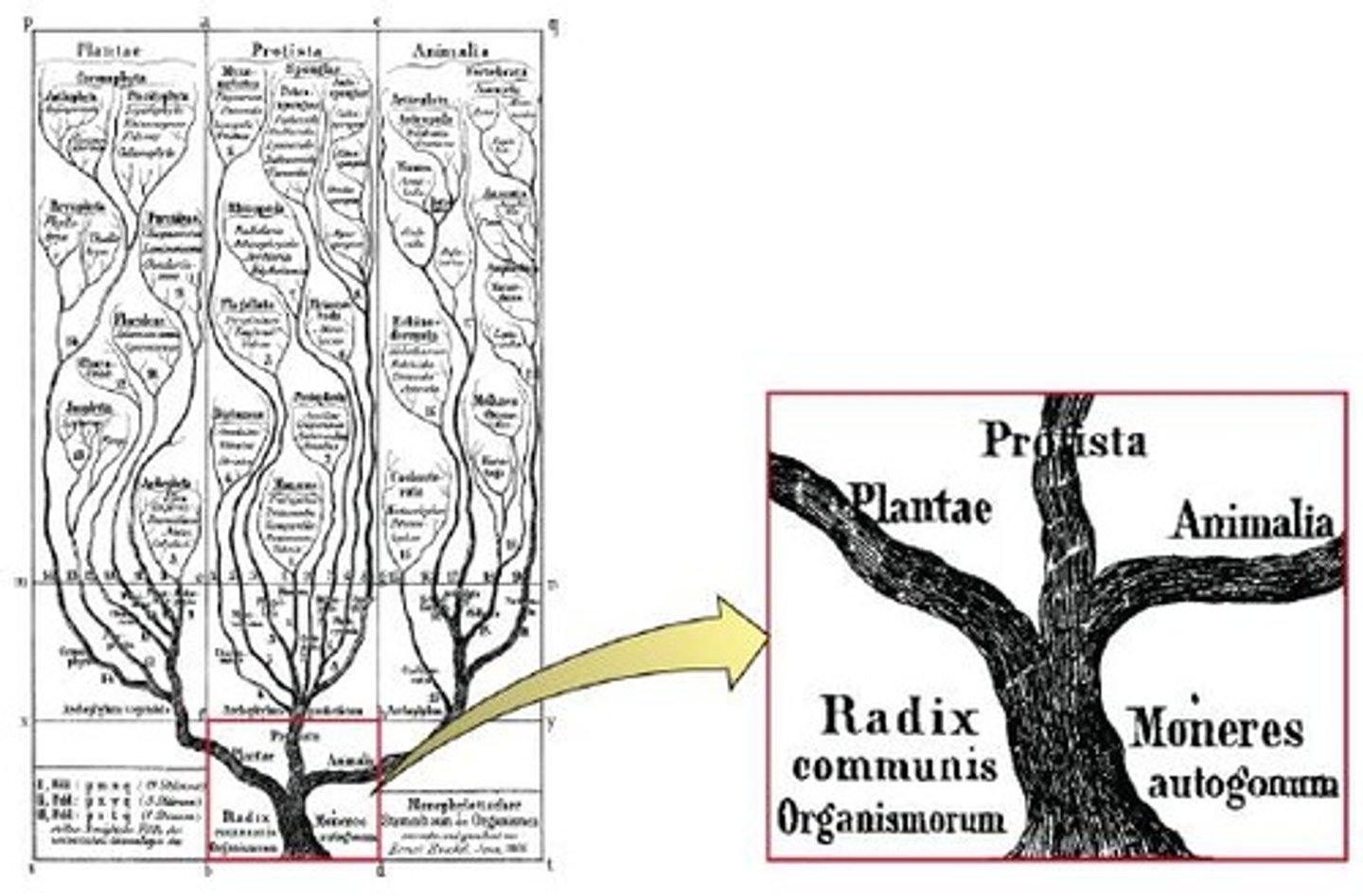
Three Kingdom Tree
Included Protista for unicellular organisms and Monera for unicellular organisms whose cells lack nuclei
Protista
for unicellular organisms
Monera
unicellular organisms whose cells. lack nuclei; ancestral to other forms of life
Whittaker Tree
Five-Kingdom Tree proposed adding another Kingdom (Fungi)
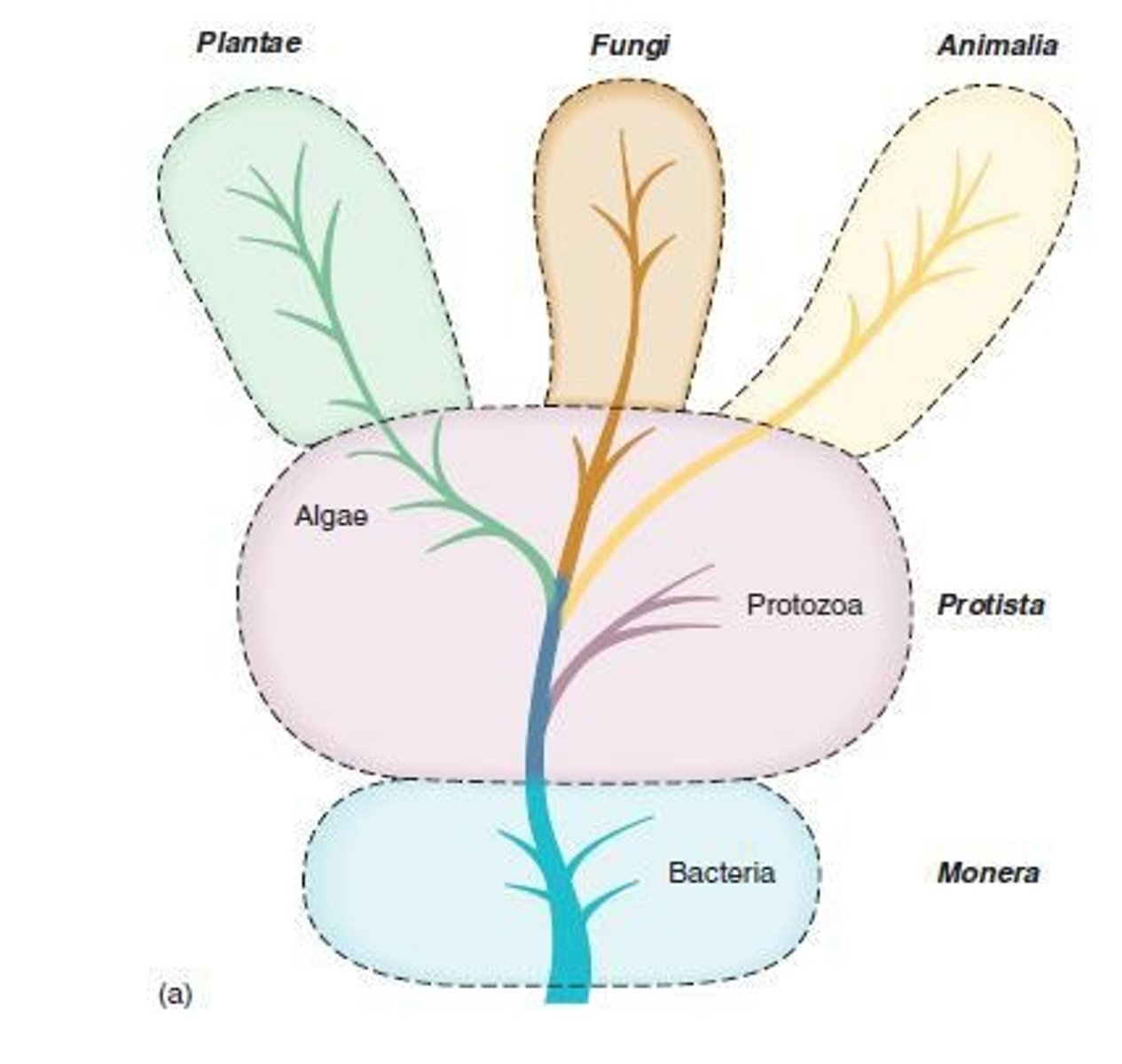
Prokaryota
Contained just the Kingdom Monera in the Whittaker Tree
Eukaryota
Contained the kingdoms: Fungi, Protista, Plantae, and Animalia in the Whittaker Tree
Carl Woese
Proposed a genetics-based tree of life with 6 Kingdoms: Eubacteria, Archaebacteria, Protista, Fungi, Plantae, Animalia
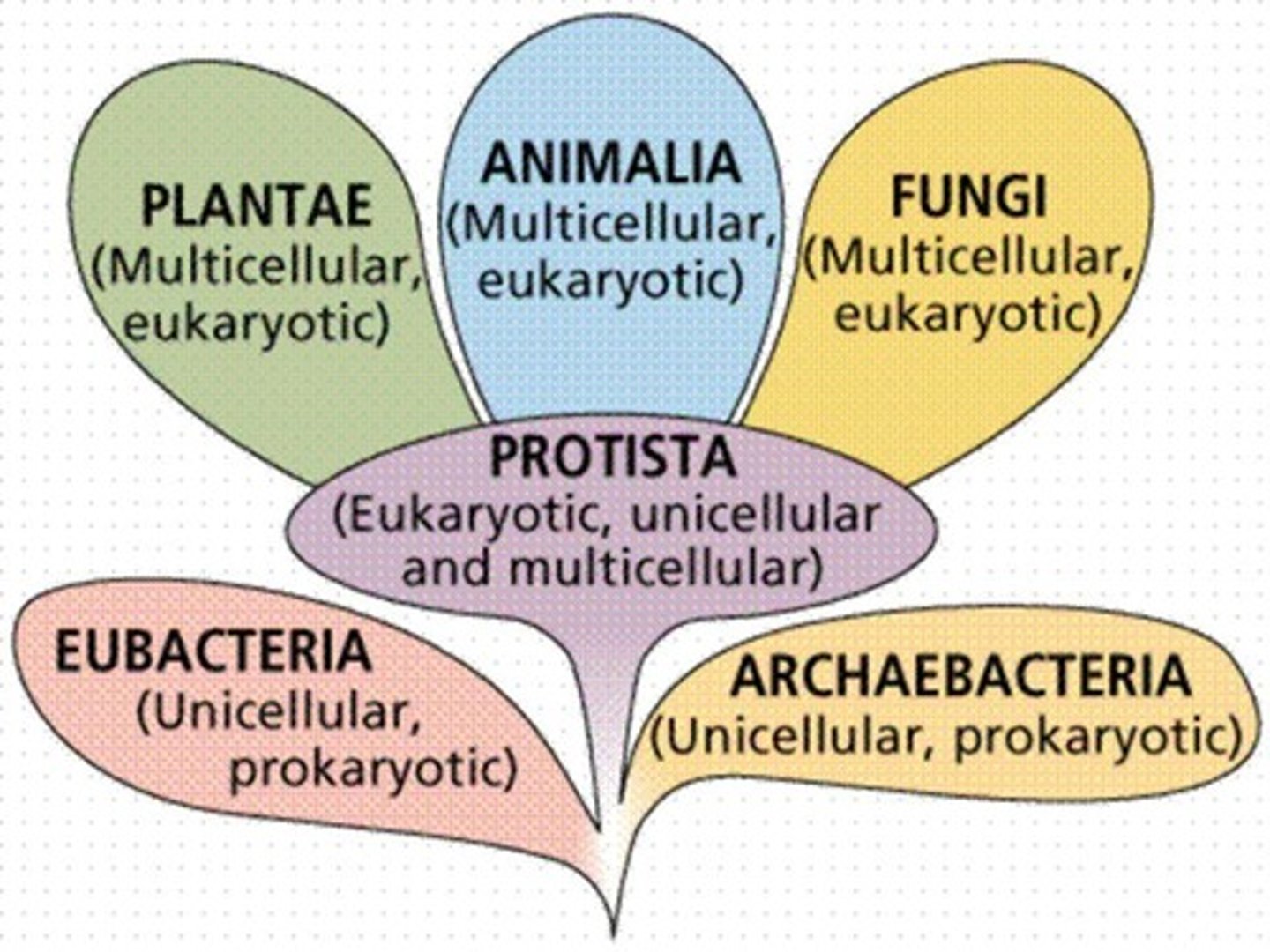
Archaebacteria
Significantly different from other bacteria and eukaryotes in terms of 16S rRNA gene sequences
Three Domains of Life
Divides cellular life forms into Archaea, Bacteria, and Eukaryote domains.
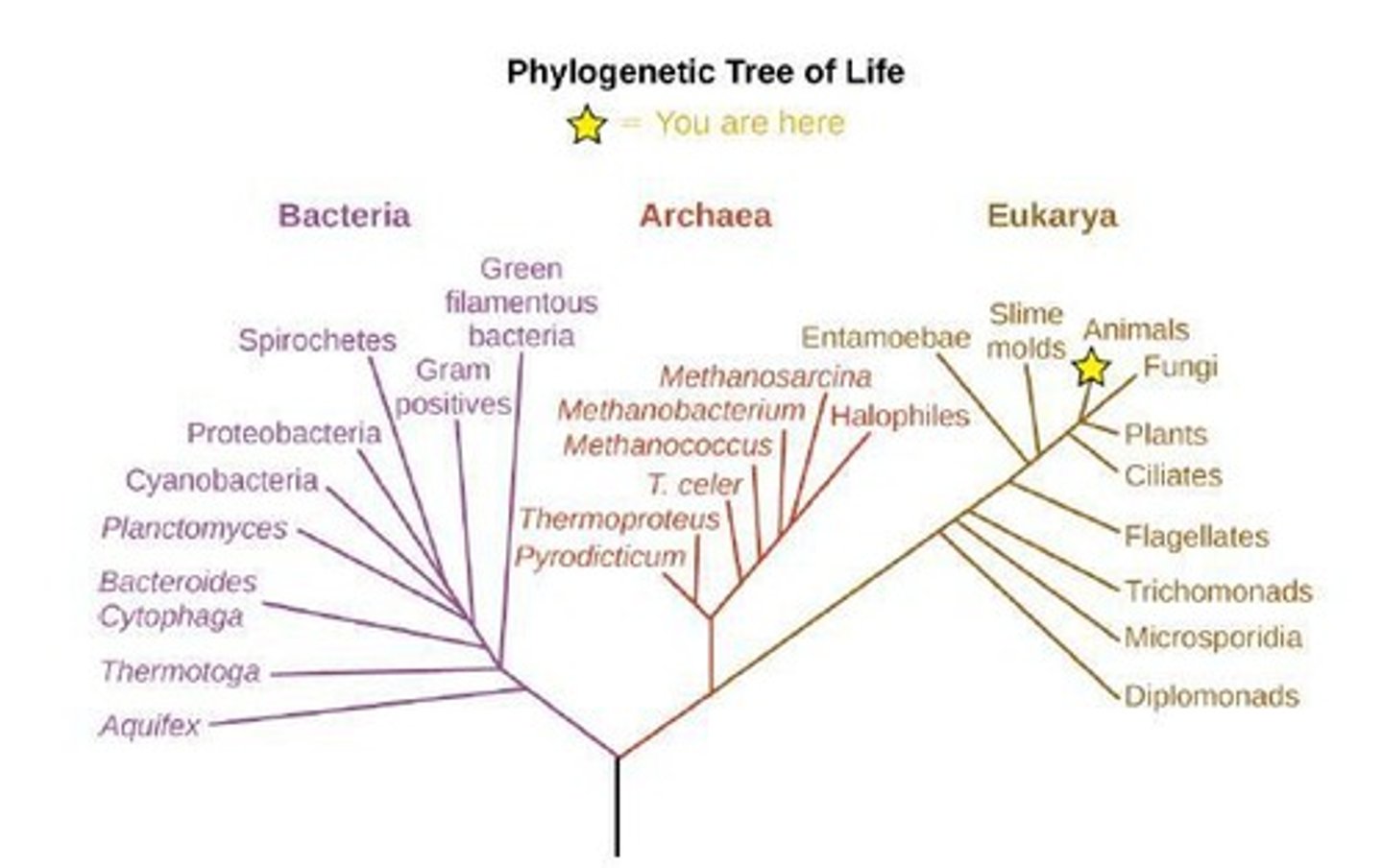
16S rRNA gene
Differences in ribosomal RNAs that synthesize new proteins.
Binomial Nomenclature
A two-word naming system for identifying organisms by genus and species.
Generic Name
Can change if the organism is assigned to another genus because of new information.
Specific Name
Stable; the oldest epithet for a particular organism takes precedence and must be used.
Candidatus
Provisional taxonomic name appended to candidate taxonomic ranks.
Thiomargarita namibiensis
Known as the Sulfur Pearl of Namibia.
Taxon
group
Taxa
groups
Species
Each distinct kind of organism is designated as a species.
Bergey's Manual of Systematic Bacteriology
A standard reference for identifying and classifying different prokaryotes.
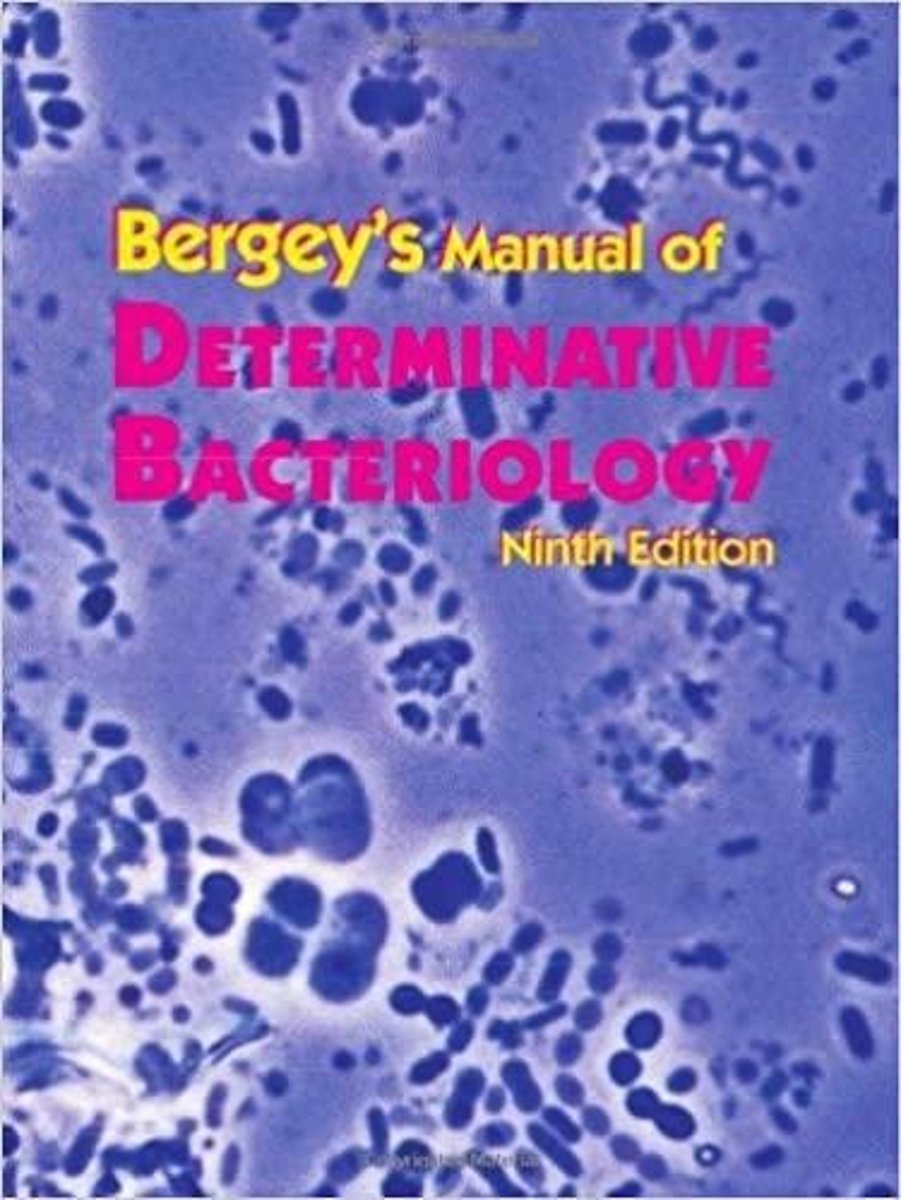
Bergey's Manual of Determinative Bacteriology
A standard reference for identifying and classifying different prokaryotes.
International Code for the Nomenclature of Bacteria
Established in 1991, it provides rules for naming bacteria.
International Journal of Systematic Bacteriology (IJSB)
A publication related to the taxonomy and classification of bacteria.
International Journal of Systematic and Evolutionary Microbiology (IJSEM)
Official publication of record for taxonomy and classification of Bacteria, Archaea, and microbial eukaryotes.
Characterization and Identification
Involves the study of a population of identical cells, not a single cell.
Pure culture
A prerequisite for characterization and identification.
Reasons for doing characterization
Identification purposes, comparison with other organisms, and exploiting beneficial characteristics.
Cultural characteristics
Affected by the nutrients required for growth and the physical conditions of an environment that will favor growth.
Nutritional types
Based on energy source and carbon source.
Photoautotroph
Uses sunlight as energy source and CO2 as carbon source.
Photoheterotroph
Uses sunlight as energy source and organic compounds as carbon source.
Chemoautotroph
Uses inorganic chemicals (H2, NH3, NO2-, Fe2+, H2S) as energy source and CO2 as carbon source.
Chemoheterotroph
Uses organic compounds (sugars, amino acids, etc.) as energy source.
Psychrophile
Grows between -5 and 15°C.
Psychrotroph
Grows between 20 and 30°C but grows well at lower temperatures.
Mesophile
Grows between 25 and 45°C.
Thermophile
Grows between 45 and 70°C.
Hyperthermophile
Grows between 70 and 110°C.
Acidophile
Optimal pH below 5.5.
Neutrophile
Optimal pH between 5 and 8.
Alkaliphile
Optimal pH above 8.5.
Metabolic characteristics
Biochemical/physiological characteristics, i.e., presence of enzymes, fermentation of sugar.
Citrate Test
A test used to determine the ability of an organism to utilize citrate as its sole carbon source.
Methyl Red reaction
A test that indicates the production of stable acid end products from glucose fermentation.
Gram Negative
Refers to bacteria that stain pink in the Gram staining procedure, indicating a thin peptidoglycan layer.
Gram Positive
Refers to bacteria that stain violet in the Gram staining procedure, indicating a thick peptidoglycan layer.
Cell Wall Chemistry
The chemical composition and structure of the cell wall that determines the classification of bacteria.
Cell Membrane Chemistry
The chemical composition and structure of the cell membrane that regulates the entry and exit of substances.
Capsule Chemistry
The chemical composition of the capsule surrounding some bacteria, which can protect against phagocytosis.
Antigen
A molecule that binds to a specific antibody, often stimulating a response in the immune system.
Antigenic
Describing a substance that can provoke an immune response.
DNA Hybridization
A technique used to identify the presence of specific DNA sequences by hybridizing complementary strands.